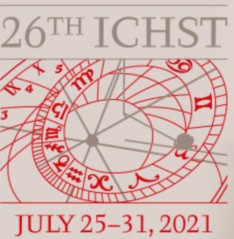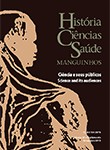The article, “The reign of hormones and the construction of gender differences”, written by the anthropologist Fabíola Rohden*, discusses the redefinition of gender and sex differences using biological aspects. Hormones and organs like the uterus and ovaries are increasingly been used to define roles and behavior.
We have seen an increasing number of articles and news discussing the importance of hormones to our health and well-being and the role they play in certain behaviors. The idea that our hormones determine everything, even our behavior towards the opposite sex appears to be gaining ever more followers. There is even the term ‘hormonal intelligence’. According to the article, we are witnessing the reign of a ‘hormonal body’.
The pharmaceutical industry has benefited enormously from this “hormonal approach”. In the past decades we saw the launching of miraculous substances. Schering laboratories, for example, developed a formula to alleviate the symptoms of ‘androgen deficiency of the aging male’. According to its advertising campaign, a disorder called ‘andropause’ is linked to decreased testosterone production after the age of 40, which can possibly lead to loss of libido, loss of energy and depression. Another campaign promoted the drug Intrinsa, which Procter & Gamble Pharmaceuticals has announced as the “female Viagra”. The substance promises to boost the libido of menopausal women. Once again, the substance in question is testosterone, a hormone linked to sexual desire.
The discussion about the hormonal body has been much more focused on women. This discussion involves female physiology and how hormonal transformations, and the emotional instability that comes with it, govern their lives. Phenomena like ‘pre-menstrual stress’ or changes during menopause have been used to explain different types of behavior, in addition to feeding a huge industry for treating ‘female troubles’.
This hormonal and physic definition of sex helps determining gender by hormones. It defines male and female behaviors. According to this article, what we note in the discourse on ovaries and hormones is not only a description of their function within the female body but a treatise on how women behave as a function of their ovaries and hormones.
* Fabíola Rhoden is assistant professor of the Anthropology Department of Universidade Federal do Rio Grande do Sul (UFRGS) and associated researcher at the The Latin-American Center on Sexuality and Human Rights (CLAM).
See Full article: Rohden, Fabíola, “The reign of hormones and the construction of gender differences.” Hist. cienc. saude-Manguinhos [online]. 2008, vol.15, suppl., pp. 133-152.”
For other related articles in English, Spanish and Portuguese, see:
Felitti, Karina. “Parirás sin dolor: poder médico, género y política en las nuevas formas de atención del parto en la Argentina (1960-1980).” Hist. cienc. saude-Manguinhos, Dic 2011, vol.18, suppl.1, p.113-129.
Engel, Magali Gouveia. “Forbidden sexualities: madness and the male gender.” Hist. cienc. saude-Manguinhos, 2008, vol.15, p.173-190.
Pereira, Audrey Vidal, Rotenberg, Lúcia and Oliveira, Simone Santos. “Relações de gênero e interdependências: reflexões a partir de mudanças na configuração hospitalar.” Hist. cienc. saude-Manguinhos, Set 2013, vol.20, no.3, p.1007-1024.
Silva, Marinete dos Santos. “Reprodução, sexualidade e poder: as lutas e disputas em torno do aborto e da contracepção no Rio de Janeiro, 1890-1930.” Hist. cienc. saude-Manguinhos, Dez 2012, vol.19, no.4, p.1241-1254.
Goldenberg, Mirian. “O gênero das travestis: corpo e sexualidade na cultura brasileira.” Hist. cienc. saude-Manguinhos, Dez 2009, vol.16, no.4, p.1115-1119.
Vergara, Moema de Rezende. “As imagens femininas n’O Vulgarizador: público de ciência e mulheres no século XIX.” Hist. cienc. saude-Manguinhos, 2008, vol.15, p.191-208.








